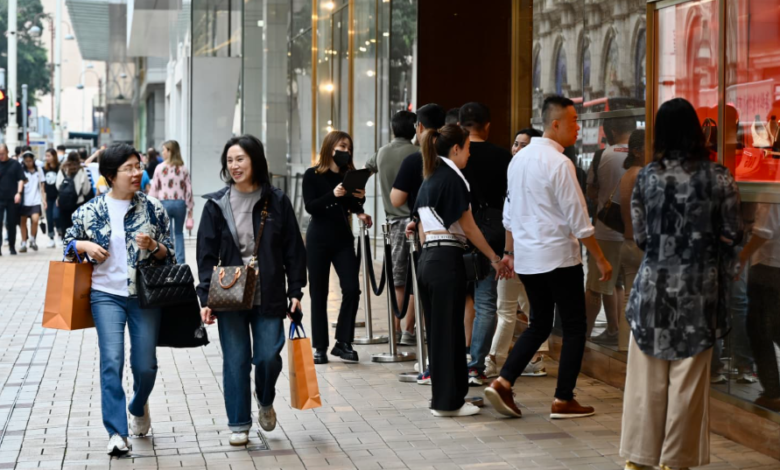Public Tour Hong Kong And The Evolution Of Retail Experiences

Introduction
Hong Kong has long been known as a global hub for trade, tourism, and shopping. With its dynamic blend of culture and commerce, the city offers something unique for both visitors and locals. In recent years, the idea of a public tour hong kong has gained momentum as a way to introduce people not only to historical and cultural landmarks but also to the vibrant retail districts that define the city. These tours highlight how retail is no longer just about shopping—it is about storytelling, cultural exchange, and creating memorable experiences.
The Concept Of Public Tours In Hong Kong
Public tours in Hong Kong have traditionally focused on temples, markets, harbor views, and colonial architecture. However, they are now evolving to include retail districts as part of the experience. Visitors can join guided or self-paced tours that take them through both modern malls and traditional street markets, showcasing how retail reflects the lifestyle and identity of the city.
The public tour hong kong model blends education with leisure. Participants can learn about the history of a neighborhood, experience its food culture, and explore its retail environment all in one journey.
Why Retail Is A Key Part Of Public Tours
Retail in Hong Kong is more than just shopping; it represents the heartbeat of the city’s economy and culture. Including retail in public tours offers several benefits:
- Cultural understanding: Shops and markets showcase traditional crafts and modern trends.
- Tourism boost: Shopping remains a major attraction for global visitors.
- Economic growth: Tours bring business to both large retailers and small local vendors.
- Memorable experiences: Visitors leave with more than products—they leave with stories.
Popular Retail Stops In Public Tours
Certain retail locations in Hong Kong are iconic and often feature in public tours.
Mong Kok Street Markets
Known for their bustling energy, Mong Kok markets offer everything from fashion to electronics. They are a favorite stop in the public tour hong kong experience because they combine affordability with cultural authenticity.
Causeway Bay Shopping District
One of the busiest retail areas in the world, Causeway Bay is filled with international brands, luxury boutiques, and lifestyle stores. It highlights Hong Kong’s global position in the retail industry.
Tsim Sha Tsui And Harbour City
Tsim Sha Tsui connects retail with scenic harbor views, making it a blend of leisure and shopping. Harbour City Mall, one of the largest in Asia, is often included in retail-focused tours.
PMQ Creative Hub
A redeveloped historical site, PMQ is now home to local designers and independent shops. It is an essential stop for those seeking unique and creative experiences.
See also: How Video Ads on Facebook Win Attention from Real Estate Buyers
The Role Of Retail In Tourism Development
The public tour hong kong initiative plays a vital role in tourism by integrating retail with cultural exploration. This approach has several long-term benefits:
- Strengthening Hong Kong’s brand: It reinforces the city’s identity as both a shopping paradise and a cultural destination.
- Supporting local businesses: Small shops gain visibility when included in public tours.
- Enhancing visitor satisfaction: Tourists experience more than sightseeing; they actively engage with the city’s lifestyle.
Economic Impact Of Retail Tours
The integration of retail into public tours directly contributes to economic growth.
- Higher spending per visitor: Tourists not only pay for the tour but also shop at featured locations.
- Job creation: Increased tourism activity generates opportunities in retail, hospitality, and tour operations.
- Global investments: International retailers are more willing to invest when they see retail linked with tourism.
Challenges Facing Public Tours In Retail Areas
While the concept is successful, the public tour hong kong faces challenges that need to be addressed.
Overcrowding
Popular retail districts can become too crowded, leading to a diminished visitor experience.
Rising Costs
Retailers in tour-heavy areas often face higher rental prices, making it harder for small vendors to survive.
Balancing Authenticity And Commercialization
It is important to preserve cultural authenticity in tours without turning every experience into a purely commercial activity.
Sustainability And Future Directions
The future of public tours in Hong Kong is closely tied to sustainability. Eco-friendly practices such as promoting local artisans, reducing single-use plastics, and encouraging walking tours are gaining attention. Additionally, technology will play a major role. Mobile apps, augmented reality, and cashless payments can enhance the public tour hong kong experience by making it more interactive and convenient.
The Blend Of Culture And Commerce
What makes Hong Kong unique is its ability to blend traditional culture with modern commerce. Public tours that include retail stops reflect this dual identity. A visitor might enjoy a centuries-old temple in the morning, shop in a luxury boutique in the afternoon, and dine in a traditional market at night—all within the same district.
Conclusion
The public tour hong kong initiative is more than a tourism strategy; it is a way to showcase the city’s cultural and retail identity. By integrating shopping districts into tours, Hong Kong provides visitors with a complete experience that goes beyond sightseeing. The retail sector benefits through increased visibility and sales, while tourists gain meaningful and memorable journeys. With careful planning, sustainability, and inclusivity, this approach can strengthen Hong Kong’s position as one of the world’s most attractive destinations for both culture and commerce.







